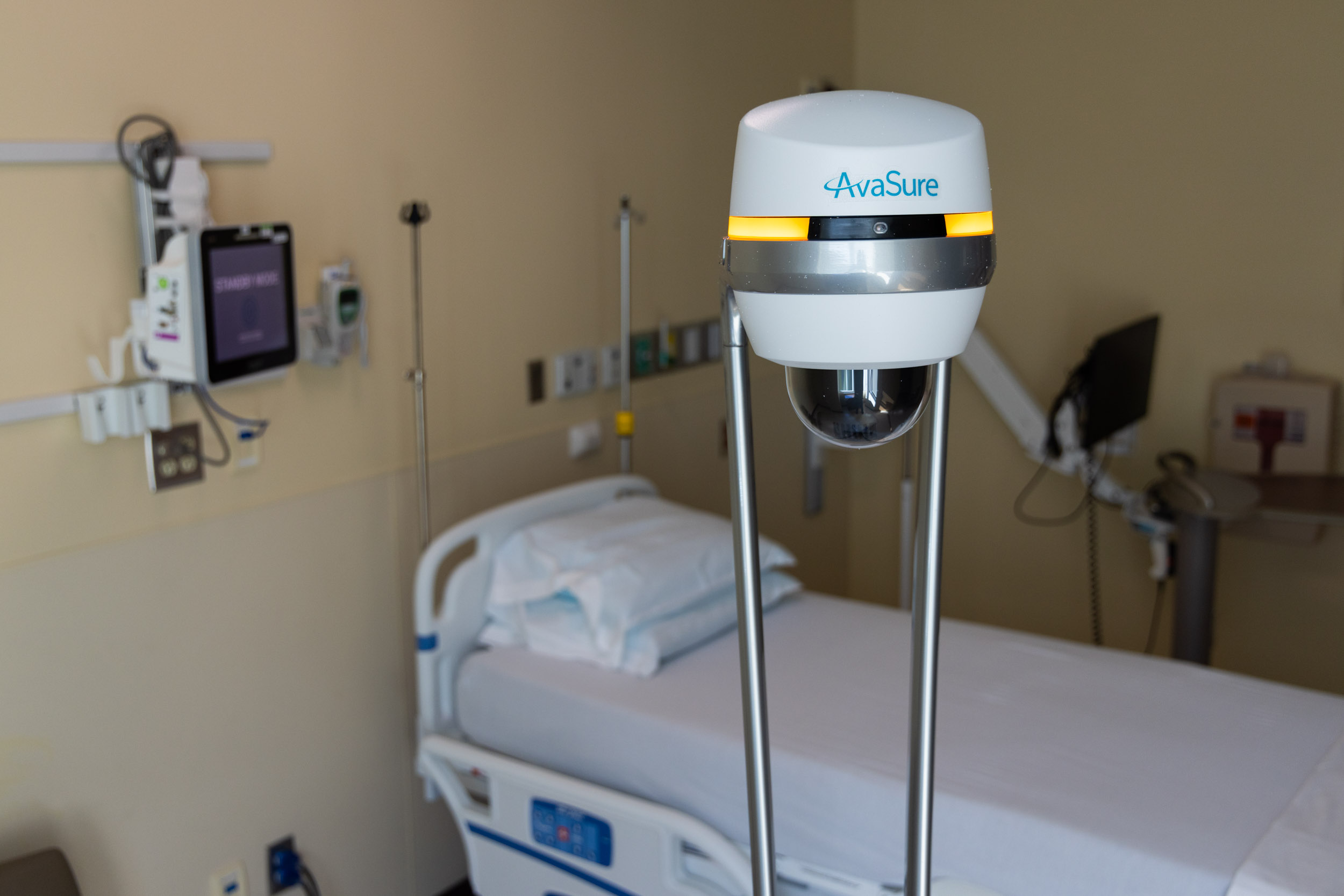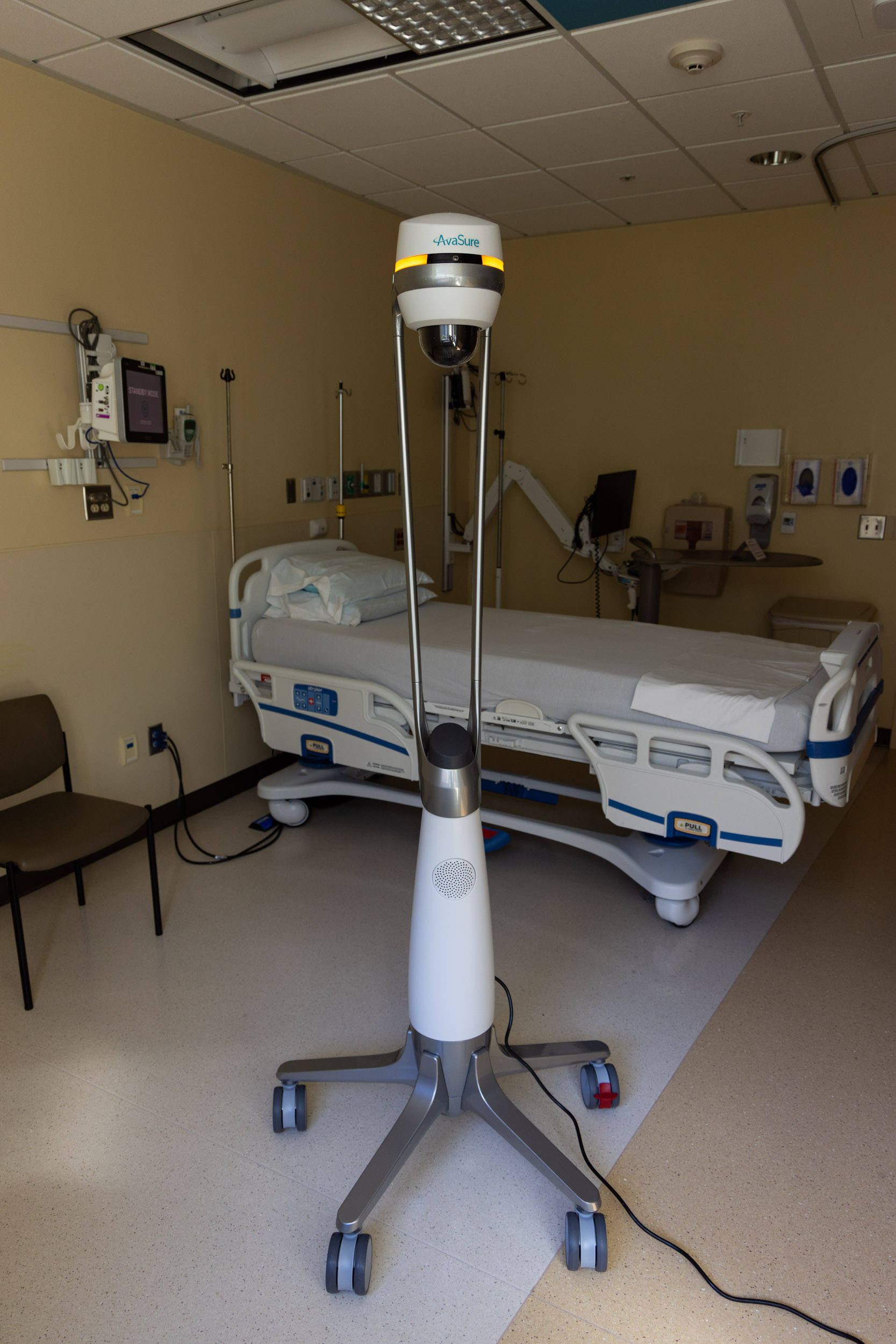Monday, November 4, 2024
-
Virtual safety companions roll out at Roper St. Francis Healthcare to help monitor at-risk patients

Roper St. Francis Healthcare on Tuesday, Nov. 5, will deploy new virtual safety companions (VSC) — a modernized method of enhancing patient care by helping to keep an eye on at-risk patients.
This step is a key component of a Roper St. Francis Healthcare Strategic Plan 2030 initiative to modernize technology throughout the system.
VSCs also play a critical role in addressing key priorities for the not-for-profit system: bolstering safety for patients and Roper St. Francis Healthcare teammates. Workplace violence is a top concern among teammates and healthcare workers nationwide, and all Roper St. Francis Healthcare hospitals have earned “A” Hospital Safety Grades from The Leapfrog Group for three consecutive grading periods.
Powered by AvaSure hardware and software, 15 cameras on wheels have been distributed to all four of the system’s hospitals. While they’re stored in a strategic location within each facility, the mobile devices can be wheeled into the rooms of patients who present a possible potential safety risk to themselves or others, and plugged into a wall outlet. Staff at a central hub can then watch the patients through the video camera and communicate with them through a microphone and speaker.
For example, if a patient at risk for falls tries to get out of bed, the VSC can instruct the patient to stay put. If they don’t comply, the VSC can alert the unit's nursing station to the potential issue.
This can alleviate the need to summon family members to help keep a constant eye on the patient, and it enhances the quality of direct patient care for those who need it most while helping to mitigate potential injury to the patient or violence against caregivers.
“Our teammates always want to provide the highest level of care possible, and virtual safety companions will help them do that,” said Cari Modrzynski, Roper St. Francis Healthcare operational engineer who helped implement the project. “When our teammates are going from room to room to care for many patients, this can serve as a comfort blanket, assuring them that an at-risk patient is being observed.”
The VSC can add documentation in electronic medical record Epic to help inform nursing staff on decisions about patient care. The AvaSure software also can allow virtual monitors to communicate with non-English-speaking patients through many other languages.
This complements staffing at the hospitals but does not replace on-site personnel needed for the highest-risk patients. The devices do not record, and they feature a privacy mode that can be activated in appropriate situations, such as when a patient is bathing.
Patients suitable for the VSC service can include those who are:
- At risk for falls
- At risk for elopement
- Undergoing alcohol or substance withdrawal
- At risk for pulling out tubes and lines
- Suffering confusion — acute or chronic
- Suffering delirium or restlessness
- Posing other potential safety risks to themselves or teammates
The VSC cannot observe patients:
- Considered suicidal or homicidal
- On behavioral health restraints or restrictions
- Whose vitals need monitoring
The VSC also cannot be used when its use for a particular patient has already proved ineffective.
"Virtual safety companions might not fit in every circumstance, but when they do fit, it's a win-win for both our patients and our teammates," Modrzynski said. "It enhances safety by keeping an eye on the patient, while giving our teammates some peace of mind because they truly care about advancing our mission of healing all people with compassion, faith and excellence."
